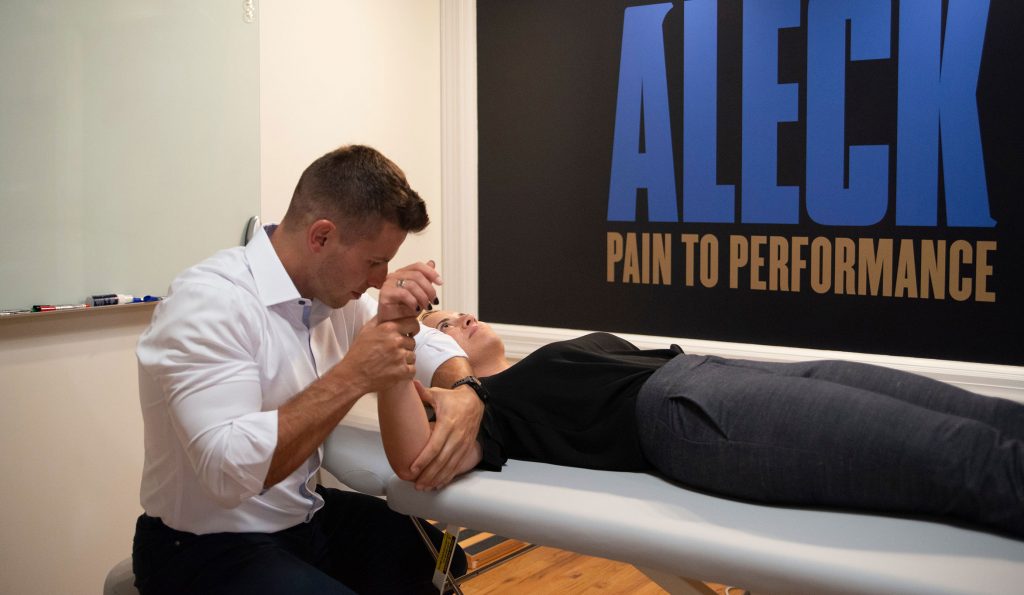Shoulder pain is within the top three most common complaints we treat at Aleck Pain to Performance. The most common causes of shoulder pain are overuse, repetitive movements, or poor body positions (all mechanical in nature). These can lead to pain in the shoulder girdle, upper arm, lower arm, and even down into the hand.
If your shoulder pain changes, for better or worse, with different movements and positions paired with stiffness or loss of range of motion in the upper body, you are likely suffering from mechanical pain. Your shoulder then requires a proper assessment to diagnose the problem accurately.

How we can help?
Our doctors utilize the most up-to-date and patient-centered approach, incorporating their extensive training in chiropractic, rehabilitation, and sports performance to quickly decrease shoulder pain without using drugs or surgery.
Mechanical shoulder pain is often resolved in as few as 2 or 3 visits (depending on the specific case). Dr. Aleck or Dr. Richmond will work with you to build strength and mobility to stay injury-free once the pain is no longer a factor. It’s a way of treating you used by some of the most outstanding practitioners in the world.

Is imaging required?
Mechanical shoulder pain does not always require imaging. Just because someone has shoulder pain doesn’t mean they need an X-Ray or MRI. Also, an MRI that shows “degeneration,” “tearing,” or “arthritis” doesn’t mean it’s generating your specific pain.
Our doctor’s mechanical exam considers many more precise factors, which is our number one suggestion when people ask where they should start. From there, they steer each patient in the right direction for their next steps in care.
Once your assessment is complete, we sit together and walk you through your recovery plan. We discuss a timeline, what treatments will catapult the speed of recovery, and what stretches, exercises, and any minor modifications in your day-to-day life need to occur outside the clinic.

Follow-up appointments are 20 minutes in length of 1-on-1 treatment doing everything possible to speed up care. Most patients start noticing changes within their first day of treatment, and, rarely, people aren’t starting to notice improvements after just 2-3 visits.



 @AleckPTP
@AleckPTP